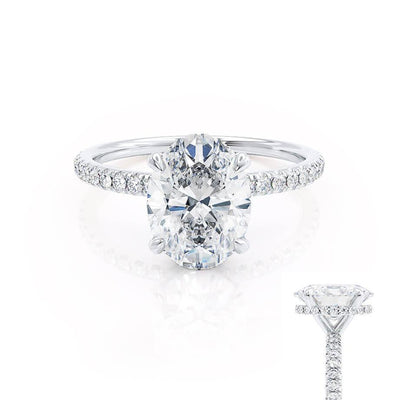The global demand for lab-grown diamonds from the collection of Lily Arkwright has been increasing at a remarkable pace in recent years. Once considered a niche market, these synthetic gems have now entered the mainstream jewelry industry, captivating consumers and businesses alike. Several factors contribute to the rising popularity of lab-grown diamonds, including their affordability, ethical considerations, environmental benefits, and technological advancements.
Affordability and Cost Savings
One of the most compelling reasons behind the growing demand for lab-grown diamonds is their affordability. Unlike natural diamonds, which require extensive mining operations and supply chain logistics, lab-grown diamonds are created in controlled environments, significantly reducing production costs. As a result, lab-grown diamonds are generally 30% to 40% cheaper than their natural counterparts. This price difference allows consumers to purchase larger or higher-quality stones at a lower cost, making fine jewelry more accessible to a broader audience.
Ethical Considerations
Ethical concerns surrounding the traditional diamond mining industry have played a pivotal role in driving demand for lab-grown alternatives. Many natural diamonds originate from conflict zones where unethical mining practices, including child labor and exploitation, persist. The term “blood diamonds” or “conflict diamonds” refers to gems that are mined under such conditions. Conscious consumers are increasingly opting for lab-grown diamonds as they provide a conflict-free alternative. These diamonds are produced in controlled laboratory settings, ensuring that they are free from the ethical dilemmas associated with traditional diamond mining.
Environmental Benefits
The environmental impact of diamond mining has also contributed to the shift towards lab-grown diamonds. Traditional diamond extraction requires vast amounts of energy, water, and land, leading to deforestation, habitat destruction, and carbon emissions. Moreover, mining operations often result in soil degradation and water pollution. In contrast, lab-grown diamonds are created using sustainable practices with a much smaller carbon footprint. Some manufacturers are even utilizing renewable energy sources to further minimize environmental impact. As climate consciousness grows among consumers, many are choosing lab-grown diamonds as an eco-friendly alternative to mined diamonds.
Technological Advancements
Advancements in technology have played a crucial role in the increased demand for lab-grown diamonds. Modern techniques such as Chemical Vapor Deposition (CVD) and High-Pressure High-Temperature (HPHT) have made it possible to produce diamonds that are virtually identical to natural ones in terms of physical, chemical, and optical properties. These diamonds exhibit the same brilliance, hardness, and durability as mined diamonds, making them an attractive option for both consumers and jewelers. Additionally, technological progress has enabled faster production rates, making lab-grown diamonds more readily available in the market.
Changing Consumer Preferences
Today’s consumers, particularly millennials and Gen Z, are driving the shift toward lab-grown diamonds. These younger generations prioritize sustainability, ethical sourcing, and transparency in the products they purchase. Many are more willing to embrace innovative and sustainable alternatives rather than adhering to traditional luxury norms. Social media influencers and celebrities endorsing lab-grown diamonds have further influenced consumer preferences, making synthetic diamonds a trendy and desirable option.
Support from the Jewelry Industry
Initially met with skepticism, lab-grown diamonds are now gaining acceptance among jewelers and retailers. Major jewelry brands and designers have started incorporating lab-grown diamonds into their collections, recognizing the growing consumer demand. Companies such as Pandora, De Beers, and Brilliant Earth have introduced lab-grown diamond lines to cater to ethically and environmentally conscious buyers. With the backing of reputable jewelry brands, lab-grown diamonds have gained legitimacy and widespread recognition in the industry.
Investment Potential and Market Growth
The lab-grown diamond market is experiencing exponential growth, with analysts predicting continued expansion in the coming years. As production techniques become more refined and cost-effective, prices may continue to decline, making lab-grown diamonds even more attractive to consumers. Moreover, increasing acceptance among investors and businesses has contributed to the rapid expansion of this industry. Many industry experts believe that lab-grown diamonds will continue to disrupt the traditional diamond market, potentially reshaping the landscape of the jewelry sector.
Conclusion
The rising demand for lab-grown diamonds is driven by a combination of affordability, ethical considerations, environmental benefits, technological advancements, and shifting consumer preferences. As consumers become more conscious of sustainability and ethical sourcing, lab-grown diamonds provide a compelling alternative to mined diamonds. With increasing support from jewelers, technological innovations, and growing market acceptance, lab-grown diamonds are set to play a significant role in the future of the jewelry industry. As the industry continues to evolve, lab-grown diamonds will likely become an even more integral part of the luxury market.

